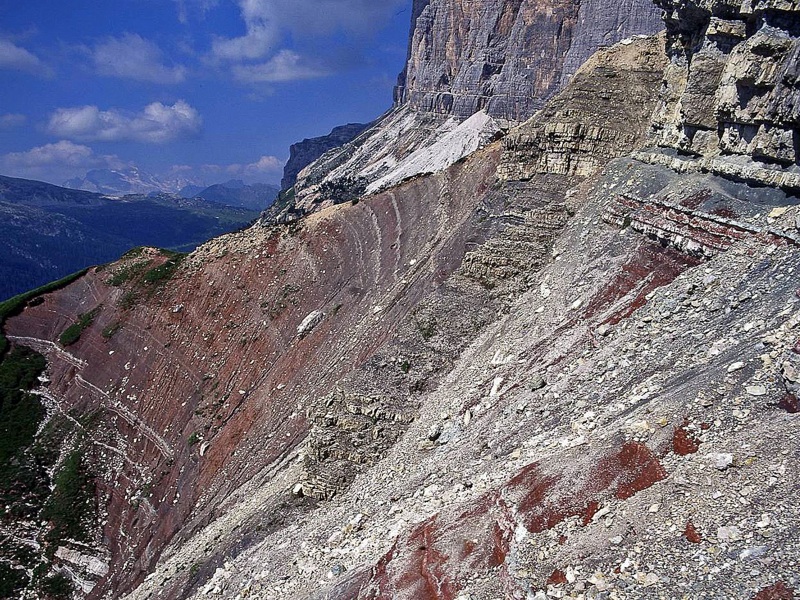Geological Itinerary
Tofana - Dibona Mountain Hut
- Trail Conditions: On foot
Spectacular paleontological site where you can discover karstic caves and ambers, fascinating caskets of time
This short ring-route cannot exhaust the great variety of landscapes and geological situations it is possible to find in Dolomiti d'Ampezzo. However, it develops across one of the most characteristic and spectacular dolomitic landscapes and gives the opportunity to visit one of the paleontological sites that have reserved recent discoveries of extraordinary scientific interest, like the most ancient ambers of Europe. The geological formations of Dolomiti d'Ampezzo, all deriving from marine sediments deposited in the Tethys Ocean, subsequently raised and petrified, date back to a period between the middle Triassic (230 million years) and the Cretaceous period (130 million years).
At the foot of the big walls of Dolomia Principale formation of Tofana, above Dibona Mountain Hut, there are thin clayey strata, clearly red and alternating with brown rock walls: it is the Raibl formation (220 million years), witnessing an environment characterized by lagoon sedimentation, during which, in a subtropical climate, the territory was formed by low and salty waters alternating with emerged holms where ancient species of resinous plants used to grow (the so-called "Voltzie").
The trunks of these plants oozed with resin drops that incorporated small insects or grains of pollen that have been perfectly preserved. These resin drops, subsequently fossilized as amber, fell into the water and have remained incorporated in the marine sediments, providing us their important content of biological history.
In Valon de Tofana, following the trail leading to Giussani Mountain Hut (no. 403) and the junction to the right leading to the equipped trail Astaldi, you will get on a hill where you will enjoy a spectacular view over the red stratifications of the Raibl. Take then the branch of train no. 404 on the left, at the foot of Tofana di Ròzes, and you will reach the trail of Tofana Cave, from where you can return to Dibona Mountain Hut along a shorter and more direct trail.
Tofana Cave, accessible by following an exposed and short equipped trail, develops in a circular shape and is 300m deep. It represents one of the rare karstic phenomena in the Dolomia Principale, less important than the cave systems situated on the calcareous plateaus of Fòsses and Fanes, but highly spectacular for its spring ice formations.
Similarly to the famous discovery of the Cave Bear finds in the nearby Conturìnes Cave (Val Badia), at the entrance of Tofana Cave some vertebrae belonging to a carnivorous feline of about 20,000 years ago have been found. These big carnivorous animals used to populate the Dolomites in recent times, when they were already emerged from the sea and become high mountains. They used to have their dens in similar caves. Their disappearance coincided with the end of a warm period and the arrival of glaciations (12,000 years ago), which covered with ice all the alpine valleys for over 3,000 years.







